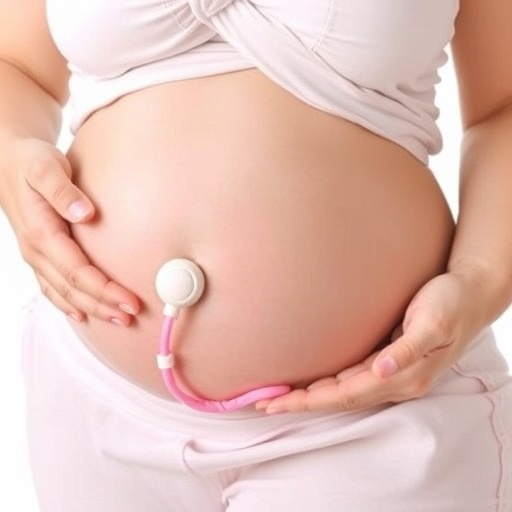A recent systematic review and meta-analysis conducted by Abu-Zaid et al. provides significant insights into two interventions commonly utilized to mitigate the risk of preterm birth among women facing specific pregnancy complications, specifically those with a singleton pregnancy and a short cervix. The study meticulously evaluates the effectiveness of cervical pessaries in comparison to vaginal progesterone, delivering crucial data that could potentially reshape clinical practice in obstetrics and maternal-fetal medicine.
Preterm birth remains one of the leading causes of neonatal morbidity and mortality worldwide. Within the context of obstetric care, it is essential to identify and treat risk factors associated with preterm labor. A short cervix, medically defined as a cervical length of less than 25 mm during the second trimester, has been consistently linked to an elevated risk of premature delivery. As a preventive measure, both cervical pessaries and vaginal progesterone have been proposed, yet empirical evidence on their comparative effectiveness had been limited until now.
Cervical pessaries, devices traditionally used to support the cervix in cases of cervical incompetence, have garnered attention for their potential role in reducing preterm birth rates. By mechanically supporting the cervix, these devices might help maintain its structural integrity and prevent early dilation. Furthermore, the possible effects of cervical pessaries extend beyond simple mechanical support; theoretical mechanisms suggest they may alter intrauterine pressure or enhance cervical mucus properties, further contributing to their effectiveness.
On the flip side, vaginal progesterone is a well-researched pharmacological intervention showing promise in promoting cervical length preservation and decreasing the incidence of spontaneous preterm birth. Hormonal treatment appears to play a significant role in modulating uterine contractions, softening the cervix, and stabilizing the intrauterine environment, making it a critical focus for obstetricians aiming to extend gestation in at-risk populations.
The meta-analysis undertaken by Abu-Zaid and colleagues synthesized data from multiple studies comparing the outcomes of cervical pessaries and vaginal progesterone in managing short cervix pregnancies. The analysis included a variety of parameters, such as gestational age at delivery, neonatal outcomes, and maternal complications, providing a holistic view of each intervention’s effectiveness.
The findings of the systematic review revealed nuanced differences between the two interventions. While both strategies offered beneficial outcomes in reducing rates of preterm birth, the comparative effectiveness varied depending on specific clinical scenarios, reinforcing the importance of tailored care in obstetrics. Notably, the data suggested that cervical pessaries might be particularly advantageous for certain subsets of patients, while vaginal progesterone continues to be a reliable option for others.
As the review was conducted with rigorous methodological standards, including adherence to PRISMA guidelines, the strength and reliability of its conclusions are significantly bolstered. It brings together diverse clinical trial data, ensuring a more comprehensive understanding of the respective efficacy and safety associated with both interventions.
The implications of these findings extend beyond clinical practice; they provide an essential framework for future research. The results spotlight the need for multi-center trials and larger cohort studies that explore not only the efficacy but also potential long-term outcomes associated with using cervical pessaries versus vaginal progesterone. Importantly, further exploration could help identify optimal application protocols, patient selection criteria, and the potential interplay between mechanical and pharmacological strategies.
In light of this new research, healthcare providers are called upon to critically evaluate current practices. The results of this meta-analysis may influence clinical guidelines and recommendations surrounding the management of pregnancies complicated by a short cervix. By integrating new evidence into practice, clinicians can better serve at-risk populations, thereby potentially improving neonatal outcomes and elevating the standard of care.
Overall, this systematic review represents a pivotal moment in understanding how best to approach the prevention of preterm birth in clinically vulnerable populations. The insights provided by Abu-Zaid et al. not only contribute to the existing literature but also pave the way for ongoing dialogue and study concerning preterm labor interventions in obstetrics. As both academics and practitioners continue to dissect these findings, the hope is that more definitive strategies will emerge that can be universally applied to enhance pregnancy outcomes and optimize maternal-fetal health.
In conclusion, the comparative analysis of cervical pessaries and vaginal progesterone in preventing preterm births presents a significant advancement in obstetric care. By shedding light on the intricacies of these interventions, this research provides a broader perspective on managing pregnancies with a short cervix. It emphasizes the importance of evidence-based practice while reiterating the need to remain open to emerging research that can further elucidate best practices in the ever-evolving landscape of maternal healthcare.
Subject of Research: Preventing preterm birth in women with a singleton pregnancy and a short cervix using cervical pessaries and vaginal progesterone.
Article Title: Cervical Pessary Versus Vaginal Progesterone to Prevent Preterm Birth in Women with a Singleton Pregnancy and a Short Cervix: A Systematic Review and Meta-Analysis.
Article References: Abu-Zaid, A., Baradwan, S., Hafedh, B. et al. Cervical Pessary Versus Vaginal Progesterone to Prevent Preterm Birth in Women with a Singleton Pregnancy and a Short Cervix: A Systematic Review and Meta-Analysis. Reprod. Sci. 32, 2540–2557 (2025). https://doi.org/10.1007/s43032-025-01929-0
Image Credits: AI Generated
DOI: https://doi.org/10.1007/s43032-025-01929-0
Keywords: preterm birth, cervical pessary, vaginal progesterone, systematic review, short cervix, obstetrics, maternal-fetal medicine.




